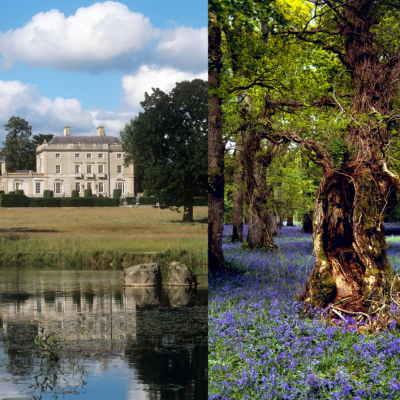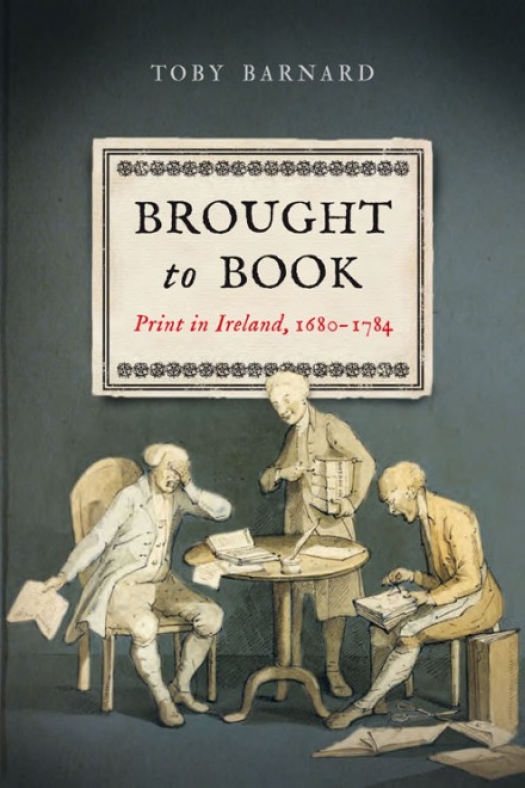.png)
Re. Ireland 2040: Our Plan – National Planning Framework. Issues and Choices.
The Irish Georgian Society welcomes this opportunity to comment on the Issues and Choices Paper published in this first phase of consultation by the Department of Housing, Planning, Community and Local Government on the National Planning Framework.
The Irish Georgian Society is a membership organisation, which encourages and promotes the conservation of distinguished examples of architecture and the allied arts of all periods in Ireland. These aims are achieved through our education programmes, by supporting and undertaking conservation works, publishing original research, planning participation and fundraising. The Society has had a marked and widely acknowledged impact on the conservation of built heritage in the state and has wide experience of the problems associated with the restoration, repair and maintenance of the fabric of historic property.
Management of built heritage is a key pillar of sustainable development - it must not be viewed as a stand-alone consideration or constraint when formulating the spatial strategy for Ireland
The Society welcomes the following comments at Section 5.4 of the Issues and Choices Paper, which recognise the vital importance of the importance of the active use of built heritage assets to proper planning and sustainable development:
“Ireland has a rich vein of heritage ranging from the iconic historic buildings and sites within our towns and cities, to the natural heritage of our countryside. The NPF is an opportunity to refocus on the sustainable and adaptive reuse of our existing and historic assets, regenerate existing areas and reduce pressure for unsustainable expansion on the edges of our settlements.”
The Society acknowledges that the drafting of the National Planning Framework is at an early stage and that the Issues and Choices Paper is not necessarily a reflection of the final content of the NPF. However, the Society is concerned by the fact that reuse of existing building stock (particularly when so much of the existing building stock is vacant or underused) is barely mentioned in the 54 page Issues and Choices Paper. Specifically, the two sentences quoted above from Section 5.4 comprise the only reference in the Issues and Choices Paper to reuse of Ireland’s existing building stock, with the clear emphasis of the document being placed on the construction of new development (e.g. “There will be a need for an absolute minimum of half a million new homes, which is at least 25,000 additional homes, every year”). It is of concern that the only reference to reuse of existing building stock is included under a section, which mostly sets out “threats” and constraints to development. This is misleading and grossly undervalues the importance of the historic environment in proper planning and sustainable development.
The 2011 publication The Greenest Building: Quantifying the Environmental Value of Building Reuse of the Preservation Green Lab (a part of the National Trust for Historic Preservation) provides that “reuse of buildings with an average level of energy performance consistently offers immediate climate-change impact reductions compared to more energy-efficient new construction”. The document goes on to state that:
“Most climate scientists agree that action in the immediate timeframe is crucial to stave off the worst impacts of climate change. Reusing existing buildings can offer an important means of avoiding unnecessary carbon outlays and help communities achieve their carbon reduction goals in the near term”.
Similarly, Built to Last: The Sustainable Reuse of Buildings, published by Dublin City Council and the Heritage Council in 2004, found that “constructing new buildings on brown-field sites is more expensive than retaining and re-using existing buildings except in situations where the extent of building repair and refurbishment required is extremely high”.
The NPF must make it clear that the sustainable reuse of existing building stock will be a key element in ensuring that the core objectives of the National Planning Framework are achieved. As alluded to in Section 5.4, reuse of existing building stock will not only ensure the protection of our built heritage by keeping it in active use, but will contribute to urban regeneration; the revitalisation of our village, towns and city centres; and combat urban sprawl. In short, the most sustainable building is the one that already exists.
Moreover, the contribution of heritage to the economy is significant. Heritage and Ireland’s historic environment is estimated to account for €1.5 billion or 1% of the State’s Gross Value Added (GVA) and some 2% of overall employment (approximately 65,000 employment positions)[1]. Achieving balanced economic development will be a core goal of the NPF and heritage can play a significant role in this.
For these reasons, it is of crucial importance that consideration of heritage (including built heritage and historic landscape) is not side-lined, but is a central considertion in the formulation of the new National Planning Framework. Perpetuating the view that built heritage is a constraint on development and failing to provide clear statements in spatial planning policy about the importance of the historic environment to achieving key strategic goals is likely to frustrate the implementation of the adopted NPF.
National Planning Framework must be informed by the National Landscape Character Assessment
Much of Ireland’s most distinguished architectural heritage is to be found in its landscapes, whether it be National Monuments or protected structures, ecclesiastical buildings and ruins or country houses, whether grand or modest in scale. What is distinctive for all of these structures is their siting and setting. Furthermore, their associated lands and/or demesnes had been designed, elaborated, planted and inhabited to enhance the setting. Rivers, loughs, hills, magnificent valleys and mountains are all engaged and embraced whether as framed views or as elements within the designs.
The gardens and designed landscapes of the 17th through to the 19th century were extensions of the plan of the house, to be experienced through all the senses as one inhabited outside spaces or moved along walks or rides. House and landscape were often a single coherent design. Ancient monuments and sacred places along with ruins and churches have been engaged in a visual dialogue across the land with country houses and their designed landscapes, each renewing their importance and redefining their significance.
In the attendant landscapes of country houses, ancient woodlands have been greatly valued. Individual groups of trees, avenues, boundary zones and new woodlands have been planted for both utility and amenity value. They have created microclimates, providing shelter for buildings and productive land. They have heightened the experience of the setting, and they have composed views, framing significant natural and manmade features. Natural watercourses and features were augmented with man made versions for utility and beauty and water was managed for supply and productivity in a way that contributed to the landscape. These landscapes, large and small, along with the fields enclosed with walls or banks and planted with hedgerows that now contain mature trees, all coalesce to make collective creations of singular importance.
Woodlands, wooded valleys, boundary planting and hedge rows form important ecological corridors and networks, so important not only to maintain biodiversity but also in their contribution to carbon sequestering.
The final National Planning Framework will direct growth at a national level, including the necessary major strategic infrastructural development necessary to support that growth. Having regard for the potential for such development to result in impacts and cumulative impacts on sensitive landscapes, it is essential that any future spatial strategy for Ireland be informed by a detailed analysis of Ireland’s landscape in order to ensure that the final strategy can be implemented. The Society acknowledges that the Issues and Choices Paper makes reference to actions in the National Landscape Strategy to “develop a National Landscape Character Assessment in Ireland… on a trans-boundary basis … [to] … complement Northern Ireland’s Landscape Charter.” However, there is no suggestion in the Issues and Choices Paper that this work will be undertaken in advance or in tandem with the preparation of the emerging National Planning Framework. It is unclear how a robust spatial strategy for Ireland can be adopted in the absence of a comprehensive assessment of the national landscape character. The completion of the NIAH Survey of Historic Gardens and Designed Landscapes will also be of significant importance in determining preferred locations for major infrastructural development.
Other important initiatives relevant to the drafting and implementation of a new National Planning Framework:
- Creation of a database of assets of national and international heritage importance: the existing system for the protection and management of Ireland’s historic environment comprises a fractured and convoluted system implemented by means of multiple enactments, regulations and statutory guidelines. Numerous bodies hold responsibility for elements of architectural, archaeological and cultural heritage and these bodies pursue different approaches to the protection and management of structures, sites and landscapes of heritage importance. Information on assets of architectural, archaeological and cultural heritage importance have been assembled into a number of different resources (e.g. the National Inventory of Architectural Heritage, the Survey of Historic Gardens and Designed Landscapes; the Record of Monuments and Places; the Sites and Monuments Record; the list of National Monuments; county Records of Protected Structures; the UNESCO World Heritage List, etc). The existing system is opaque and difficult to navigate. Consideration could be given to collating a database of sites, monuments, buildings, gardens and landscape of national and international heritage importance. A number of these resources already identify the importance of architectural, archaeological and cultural heritage assets (i.e. identify whether an asset is of national or international importance). Such a database would have numerous benefits including:
(i) informing the drafting of the NPF by identifying areas of particular architectural, archaeological and cultural heritage sensitivity;
(ii) improving public engagement (including tourist engagement) with Ireland’s historic environment; and
(iii) providing a clear and simple resource for developers and investors so as to promote certainty and help direct investment appropriately.
- Resourcing: Many relevant bodies, including local authorities and An Bord Pleanála, do not have a dedicated conservation officer or do not have adequate staff resources in terms of suitably qualified conservation professionals. This acts as a barrier to the effective implementation of national strategic planning policy for many reasons, including:
(i) Insufficient resources at local authority can be an impediment to developing planning policy at local level (i.e. in the statutory plan) to a sufficient level in order to provide adequate direction and certainty in relation to development within or in proximity to the historic environment or within historic landscapes;
(ii) In the absence of the expertise of a suitably qualified conservation professional, assets of architectural, archaeological and cultural heritage significance can go unidentified and can be lost or damaged due to be inappropriate, albeit well-meaning development; and
(iii) Lack of access to suitably qualified conservation professionals can cause significant delays in the adjudication of planning applications of all sizes, preventing issues related to the impact of development on assets of architectural, cultural and archaeological heritage being identified at an early stage during the planning process (e.g. at pre-planning consultation) and increasing the likelihood of appeal and, ultimately, refusal of permission on heritage grounds.
Given this, the Society submits that the NPF must include a clear objective that all consenting authorities and authorities with forward planning function (e.g. planning authorities, An Bord Pleanála, the Department of Arts, Heritage, Regional, Rural and Gaeltacht Affairs, etc.) be adequately resourced with suitably qualified conservation professional.
Conclusion
The Society calls on the Government to demonstrate the central role of Ireland’s historic environment to the achievement of sustainable development and the achievement of balanced economic growth in the National Planning Framework. If we can be of any further assistance to this importance initiative, please not hesitate to contact us.
[1] Please see the Heritage Council’s 2011 publication Economic Evaluation of the Historic Environment Ireland for further details on the importance of heritage to the Irish economy.
Read more



.png)
